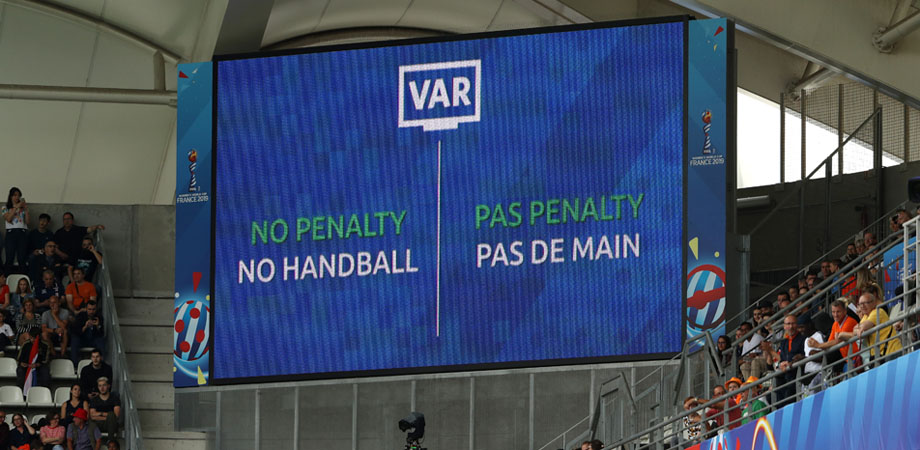Photonics on Display in the Beautiful Game

The 2019 FIFA Women's World Cup soccer tournament is well underway in France, and as in other sports tournaments, optics and photonics are assisting in calling the shots.
This year marks the first time that Fédération Internationale de Football Association (FIFA) is implementing the video assistant referee (VAR) at the Women's World Cup. This video replay technology can review four types of calls: goals, penalties, straight red cards, and mistaken identity. The VAR team has access to 33 broadcast cameras and two offside cameras. During the "knockout phase" of the tournament, an additional slow-motion camera will be installed behind each goal to add to the VAR team's resources.
Those who have been watching the games, or at least following the headlines, know that calls using VAR have been stirring up controversy. But developing new technologies to augment human judgements during sports events isn't exactly new.
On 5 July, 2012, the International Football Association Board (IFAB) voted unanimously to allow goal-line technology (GLT) in soccer matches. Each system needed to be licensed, installed, and tested in each venue that planned to adopt it. IFAB also approved the Additional Assistant Referees system, which allows assistant referees to support referees in a match.
After rigorous testing, two GLT technologies - Goal-Ref and Hawk-Eye - were made available to leagues and associations that year. The first time the Hawk-Eye system was used in a pinnacle women's football event was during the 2015 Women's World Cup in Canada.
According to the official FIFA press release: "Hawk-Eye is able to locate the ball at all times even if it is only found by two of the seven cameras. The system is millimeter-accurate and indicates whether or not a goal has been scored within one second by a vibration and visual signal on each match official's watch."
As former FIFA President Sepp Blatter said in 2002, "Players make mistakes, coaches make mistakes and yes, sometimes referees make mistakes. But football is passion, football is emotion. Football has a human touch." Considering the questions being raised by VAR in the current World Cup games, it will be interesting to see how far humans will go in letting technologies rule the Beautiful Game.
Read SPIE articles on GLT technologies:
 Photonics is a player at the FIFA World Cup
Photonics is a player at the FIFA World Cup
The numbers related to imaging and lighting technologies at this year's event show impressive advances over previous years.
 Keeping an eye on the ball
Keeping an eye on the ball
Optical technology will make history at the 2014 FIFA World Cup.
 Goal-line technology and the "beautiful game"
Goal-line technology and the "beautiful game"
Whether you call it football or soccer, whether the ball crossed the goal line is critical to get right. FIFA will decide soon how to deal with controversial goal decisions.
Related SPIE content:
Panoramic full-frame imaging with monocentric lenses and curved fiber bundles
3D curved waveguides, cut from tapered fiber faceplates, are combined with spherical optics to make a compact, 125 Mpixel/frame, 360° video camera that is useful for immersive virtual reality content.
High-resolution distributed fiber-optic sensing for dynamic structural monitoring
Scanning laser interferometry with high-performance digital signal processors can measure distributed strain and characterize structural dynamics with millimeter resolution and at hundreds of Hertz.
Exploring the quantum limits of optical communication
Quantum physics offers new ways to enhance the performance of optical-communication systems using phenomena specific to the microscopic world.
Silicon-based nonlinear devices for high-speed optical communications
High optical nonlinearity and strong light confinement in silicon waveguides allow chip-scale spectral inverters to compensate for chromatic dispersion in optical fibers.
| Enjoy this article? Get similar news in your inbox |
|



